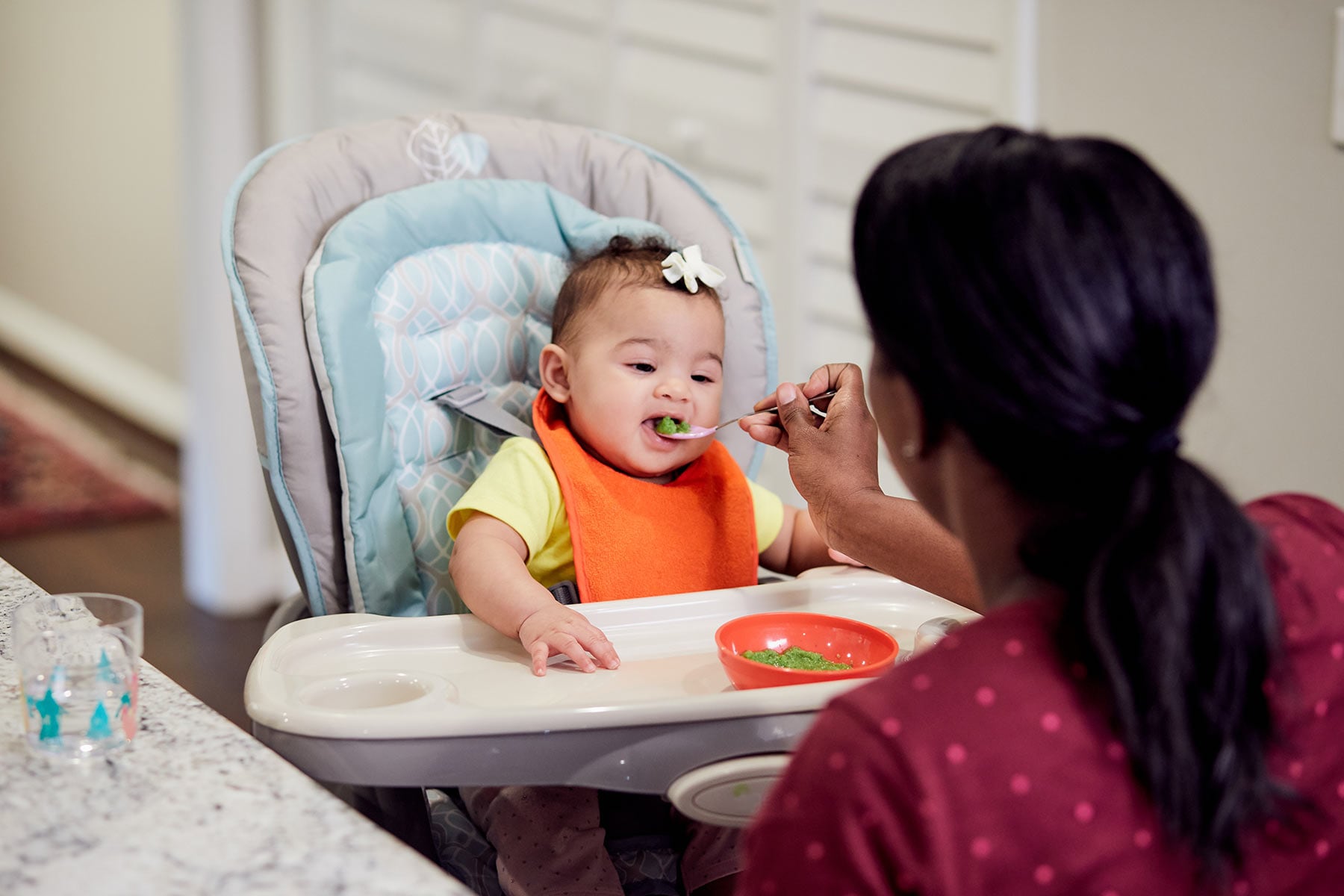4 Tips for Trying Out New Textures With Baby
Sometime between 6 and 9 months old, most babies will be ready to transition from pureed foods to thicker mashed foods, and finally to finger foods. It’s going to be messy, and it’ll test your patience, but trying new foods and textures can be a lot of fun! Enjoy watching your baby learn how to eat, and take it one step at a time.
In this article:

Choose food textures based on baby’s developmental stage
At around the 6-month mark, your baby may be ready to start solid foods. Look for these signs to see if they are ready:
- They can sit with support and have good head control
- They can open their mouth for the spoon and close it over the spoon
- They can move food into their mouth and swallow it
Start out with a thin, smoothly pureed, iron-rich food such as pureed meat, beans or iron-fortified infant cereal.
Next, try a single pureed vegetable such as green beans or carrots. If the puree is too thick, add a little water, breastmilk or infant formula to thin it out.
As your baby gets more experience with solid foods, the next step will be to transition to more advanced textures, like thicker purees and then mashed foods. Every baby develops at their own pace, so pay attention to how your baby handles it when you introduce a new food texture.

Transition to self-feeding and finger foods when baby is ready
Between 8 and 9 months, you may see signs that your baby is ready to feed themself:
- They can sit on their own
- They start picking up food with their fingers
- They try to grab the spoon and put it in their mouth
- They are not as interested in purees
- They start making a chewing motion when they eat thicker, mashed baby foods
Now you can offer them the same healthy foods you have been providing, but with a modified texture. For example, offer soft-cooked, finely diced chicken and minced peaches, or thicker textured foods like oatmeal. As your baby’s eating skills develop, move on to easy-to-chew finger foods, such as soft-cooked beans (larger beans, like kidney beans, may need to be cut in half).
To help your baby transition to solids and finger foods safely:
- Keep a close eye when they are eating
- Serve soft foods, diced or crushed into small, pea-sized pieces to avoid choking
- Avoid foods that are small and round (like grapes or hot dog slices), sticky (like peanut butter or candy) or tough (like nuts or popcorn). These are considered choking hazards.

Let your baby decide how much to eat
Pay attention to your baby’s hunger and fullness cues. A hungry baby will readily open their mouth for the spoon or even grab for it.
We know you have a million things on your to-do list, but try to allow your baby to set the pace for feeding and go as slow as they want. If your baby is full, they may close their mouth for the spoon, turn their head away, repeatedly spit their food out or even throw food on the floor. When they let you know they have had enough, stop feeding, even if they haven’t eaten as much as you wanted.

Expect a mess and practice patience when introducing new foods
Babies learn how to eat and enjoy nutritious foods through all of their senses, especially touch and feel. Sure, they may spit a food out and a moment later put it back in their mouth. And to be honest, you’re probably going to end up with more food on the baby (and the floor) than in the baby, and this is OK too. Embrace the mess and let your baby play with their food!
Remember: A messy baby is a learning baby. And grandma and grandpa will love the photos!


